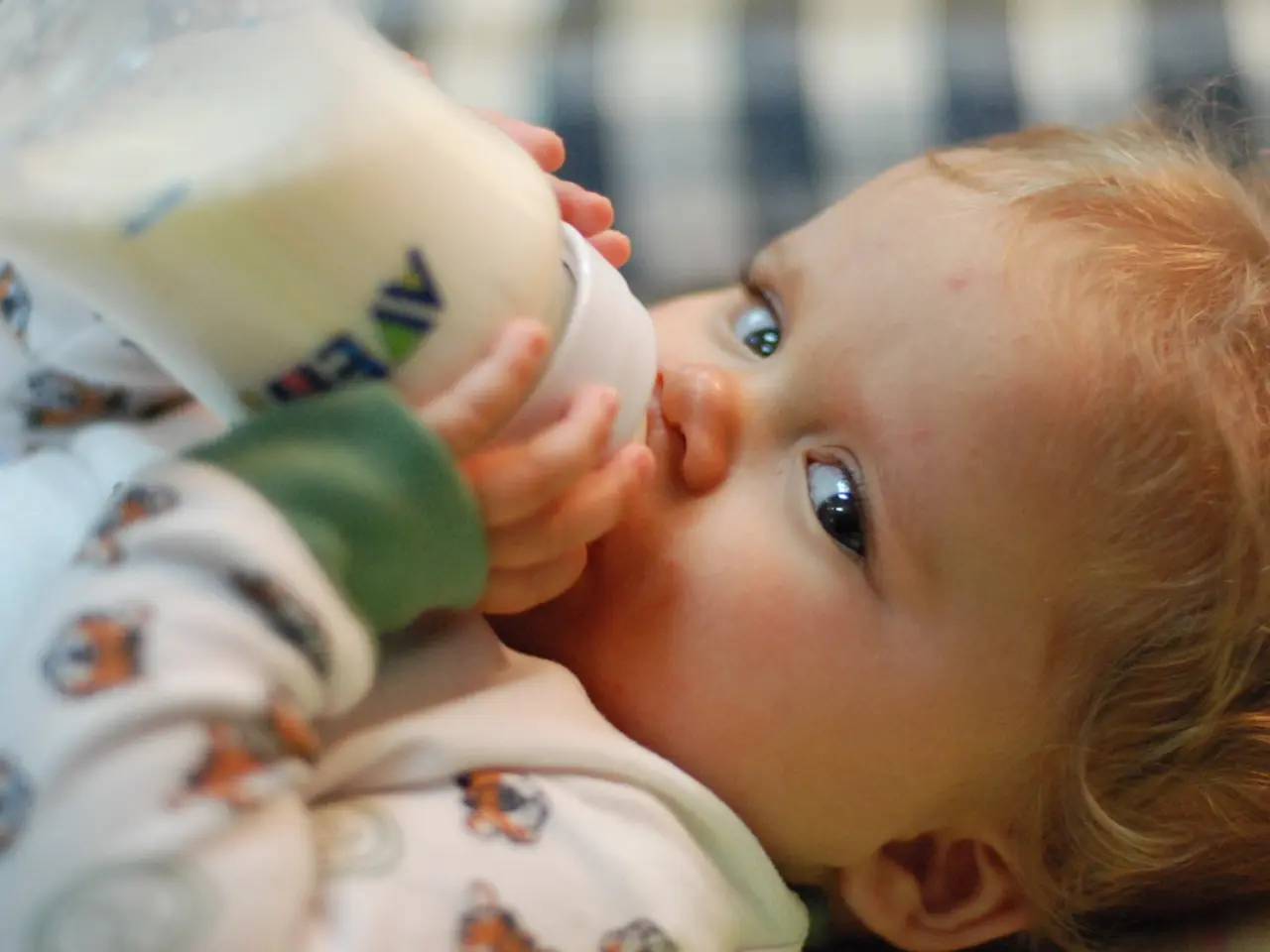Strategies for Nurturing Preterm Infants through Bottle Feeding
Feeding a premature baby can be a challenging task due to factors such as sleepiness and weak feeding abilities. However, with the right techniques and guidance, it is possible to ensure a safe and nourishing feeding experience for these little ones.
The Importance of Proper Positioning
To properly bottle-feed a premature baby, hold the baby in a side-lying or slightly upright position with the head and neck supported to maintain midline alignment at about a 30–45 degree angle. This position helps the baby coordinate breathing and bottle-feeding more easily.
Feeding Techniques for Premature Babies
Feeding should be gentle and slow, watching for signs of fatigue or distress. It's important to offer chin and cheek support, and to support the baby's chin to improve sucking on the bottle nipple. Premature infants usually start oral feeding around 32–34 weeks gestation when sucking and swallowing coordination begins to mature, but feeding skills develop at different rates, so expert guidance from NICU staff, lactation consultants, or therapists is important.
Feeding sessions should be paced to avoid choking and aspiration, recognizing that dysphagia (swallowing difficulty) is common in preterm babies. Feeding times for premature babies should ideally not exceed 30 minutes.
Managing Choking Incidents
In case a premature baby chokes during feeding, it's important to remain calm. Stop feeding immediately, keep the baby's head lower than the body to help clear the airway, and gently pat or rub the baby's back to help dislodge the blockage. If the baby becomes unresponsive, call emergency services and begin infant choking first aid, which includes back blows and chest thrusts alternating until the airway is cleared or help arrives. Always seek medical help after a choking incident to ensure the baby's safety.
Other Considerations for Premature Babies
Premature babies often require specialized feeding strategies to coordinate breathing and swallowing. Babies may start to sputter or spit during bottle-feeding, indicating that they may be taking in more than they can handle. In such cases, it's important to slow down the feeding pace.
Some premature babies may feed better when their NG tubes are removed, and caregivers can request nurses to take out the tube during feeds. Oral stimulation exercises can help prepare a premature baby for feeding, by encouraging a stronger suckling action. It's also important to burp a premature baby frequently to release air swallowed during feeds.
Seeking Professional Guidance
If you are caring for a premature infant, always consult with neonatal nurses, lactation consultants, or pediatric therapists for personalized guidance tailored to your baby's developmental stage and health status. Remember, feeding a premature baby can be a time for bonding, and caregivers should be patient as the baby learns to feed well.
With practice, parents will eventually get feeding right. The best position for bottle-feeding a premature baby is in a seated up position, with the baby on the caregiver's lap and supported by the non-dominant arm.
Feeding a premature baby can be a rewarding experience, and with the right care and guidance, these little ones can thrive. Always remember to seek professional help when needed, and to be patient and understanding with your premature baby as they learn to feed.
- Proper parenting and care involve seeking guidance from neonatal nurses, lactation consultants, or pediatric therapists to ensure a safe and nourishing feeding experience for premature babies, especially in areas of health-and-wellness, fitness-and-exercise, and nutrition.
- Despite the challenges in feeding a premature baby due to factors such as sleepiness and weak feeding abilities, exercises like oral stimulation can help in preparing the baby for better feeding, promoting a stronger suckling action.
- It's crucial to follow science-backed feeding techniques such as supporting the chin and maintaining the baby in a specific position to improve sucking on the bottle nipple, and to pace feeding sessions carefully to avoid choking incidents while respecting the baby's developmental stage.





